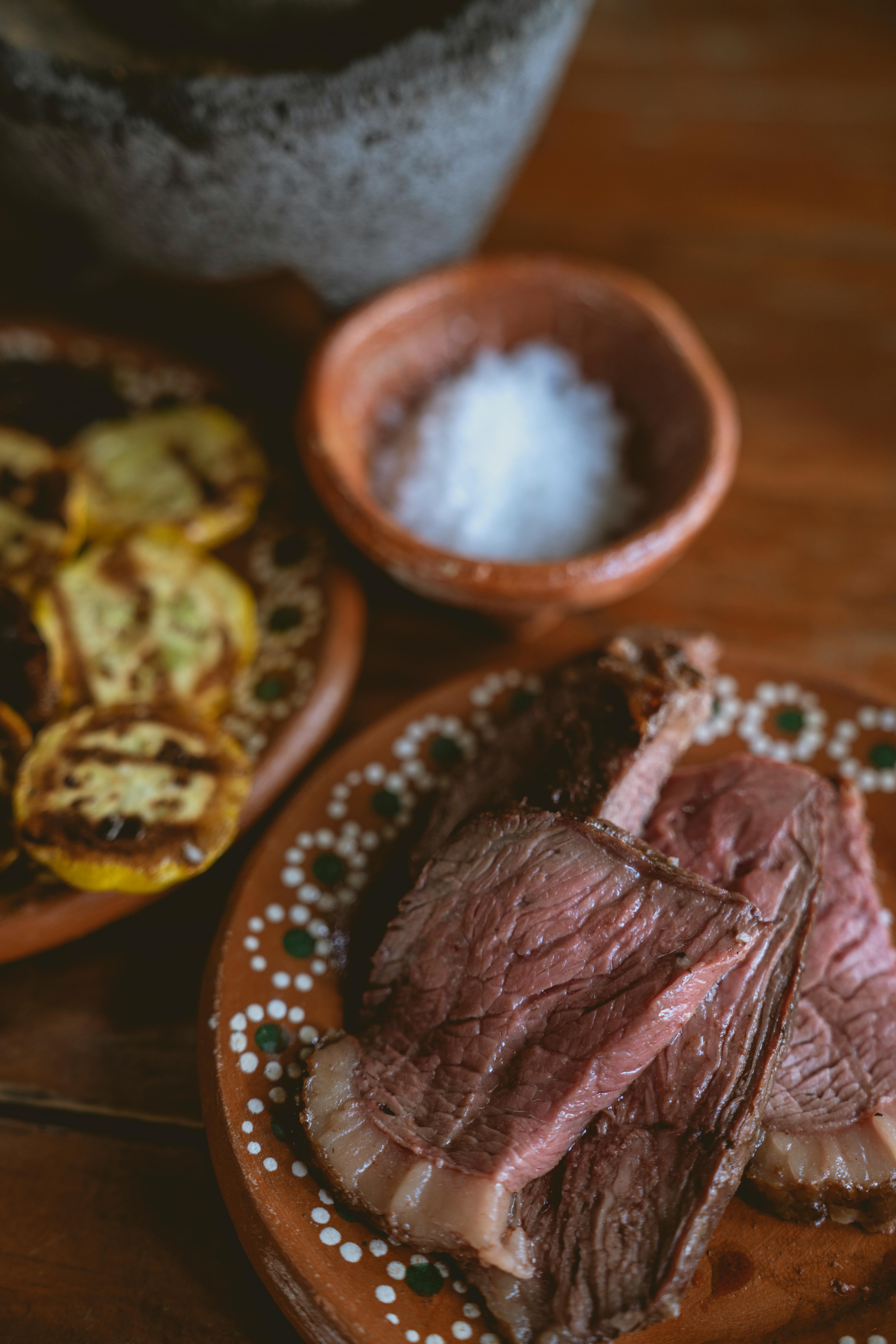Smart Ways to Choose Between Paleo Diet and Keto in 2025

Smart Ways to Choose Between Paleo Diet and Keto in 2025
In recent years, the Paleo and Keto diets have gained significant popularity among health enthusiasts, each boasting unique benefits for weight loss and overall wellness. The decision to choose between these two low-carb diets can be daunting, especially with the evolving dietary landscape in 2025. Understanding the fundamental differences, benefits, and meal planning strategies can simplify your choice and help you adhere to a diet that aligns with your lifestyle and health goals.
This article will outline the key differences and similarities between the Paleo and Keto diets, aiming to facilitate informed dietary choices and nurture healthier eating habits. Additionally, we'll explore comprehensive meal plans, essential recipes, and nutrition comparisons to provide a holistic view that promotes sustainable weight loss and enhanced energy levels. We will also delve into the impacts of both diets on metabolic health, insulin response, and overall dietary flexibility.
By the end of this exploration, you will be equipped with actionable insights and tips to create a thriving dietary strategy that works for you!
Understanding the Paleo and Keto Diet Principles
The Paleo diet, inspired by ancient eating habits, emphasizes whole foods that were available to early humans, including lean meats, fish, fruits, vegetables, nuts, and seeds. It restricts processed foods, grains, legumes, dairy, and refined sugars, advocating for a return to natural food sources. On the other hand, the Keto diet focuses on drastically reducing carbohydrate intake to enter a state of ketosis, where the body effectively burns fat for energy instead of carbohydrates. It features high-fat foods and moderate protein consumption while minimizing sugar and starchy carbohydrate sources.
Both diets have fundamental principles centered on whole and unprocessed food choices, but they differ significantly in macronutrient distribution and food sources. Understanding these principles is vital for selecting the right diet based on individual preferences and health objectives.
With these fundamentals established, let's dive deeper into the benefits of both diets to better serve your needs.
Paleo Diet Benefits
The Paleo diet's benefits include improved weight management, enhanced blood sugar regulation, and increased nutrient density. By emphasizing whole foods, this diet can support heart health while enabling better insulin sensitivity. Research suggests that following a Paleo meal plan may lead to reduced appetite and cravings, ultimately aiding in weight loss and promoting fat loss. Furthermore, many find that they experience more energy and stable energy levels throughout the day.
Moreover, the focus on natural foods fosters a closer relationship with nutritious ingredients, making it easier to adopt mindful eating practices. The absence of processed foods also reduces the intake of harmful additives and trans fats, providing a cleaner approach to nutrition.
Therefore, embracing a Paleo lifestyle not only promotes a healthier body but also encourages individuals to make informed food choices.
Keto Diet Benefits
The Keto diet offers numerous benefits, particularly for those seeking rapid weight loss and improved metabolic health. The primary advantage is the process of ketosis, in which the body shifts its energy source from glucose to ketones, leading to effective fat oxidation. This shift can result in significant fat loss alongside preserved muscle mass, which is especially beneficial for those focused on fitness and muscle gain.
Additionally, the Keto diet has been shown to support blood sugar management and potentially lower the risk of diabetes. The high-fat, low-sugar composition contributes to balanced energy levels, reducing the likelihood of energy crashes associated with high-carb diets.
By exploring the benefits of each diet, you can make an informed decision tailored to your health aspirations and goals. This naturally leads us to the next segment, focusing on crafting appropriate meal plans.
Creating Effective Meal Plans: Paleo vs Keto
When it comes to meal planning, both the Paleo and Keto diets require thoughtful consideration of food choices and nutritional content. Crafting a meal plan tailored to your lifestyle can effectively support your dietary goals.
A well-structured Paleo meal plan might include breakfast options such as avocado and egg, lunch ideas like a spinach salad with grilled chicken, and dinner featuring baked salmon with asparagus. Snacks can encompass nuts, fruits, or homemade energy bars, promoting high energy and nutrient density throughout the day.
Conversely, a Keto meal plan emphasizes high-fat, low-carb meals. Breakfast could consist of a spinach and feta omelet cooked in coconut oil, while lunch may involve a Cobb salad topped with avocado and bacon. Dinner could feature a creamy mushroom chicken dish served with steamed broccoli. Snacks may include cheese, olives, or sugar-free nut butter for sustained energy levels without spiking blood sugar.
Establishing a solid meal prep routine can ease adherence to either diet, allowing you to control your food environment and make healthier choices. Proper meal timing, combined with intermittent fasting strategies, may further enhance your dietary success.
Connected to this principle, let’s explore the essential recipes and ingredients that make each diet more enjoyable and nutritious.
Paleo Recipes and Snack Ideas
Paleo recipes can be both diverse and satisfying, supporting the principles of whole food eating. Breakfast ideas include almond flour pancakes with fresh berries or veggie scrambles loaded with tomatoes, onions, and peppers. Lunchtime might evoke thoughts of zoodles (zucchini noodles) topped with a homemade marinara sauce and grilled shrimp. Dinner could feature stir-fried grass-fed beef with broccoli and cauliflower rice.
For snacks, try making your own paleo-friendly energy bars using dates, nuts, and seeds. Other great paleo snack ideas include coconut chips, raw veggies with homemade hummus (made from nut butter and tahini), or baked sweet potato fries.
Engaging with these delicious paleo recipes will help foster a satisfying approach to your chosen lifestyle, while also ensuring a balance of macronutrients and essential vitamins.
Keto Recipes and Snack Ideas
Keto recipes often center around high-fat ingredients to achieve and maintain nutritional ketosis. For breakfast, consider preparing chia seed pudding made with coconut milk or an egg casserole with cheese and bacon. A Keto-friendly lunch might involve a hearty chicken salad with olive oil dressing or lettuce wraps filled with deli meats and cheeses. For dinner, you might enjoy a spice-rubbed roast pork with creamy garlic mashed cauliflower.
Keto snacks can include celery sticks with cream cheese or guacamole, cheesy fat bombs, and plain Greek yogurt topped with a few nuts. By incorporating these ingredients into your meals, you can effectively stay on track while maintaining energy levels throughout the day.
With appropriate meal plans and delicious recipes in mind, it’s time to evaluate how these diets compare on a nutritional level.
Nutritional Comparison: Macro and Micronutrient Analysis
The nutritional comparison of the Paleo and Keto diets highlights their differing macro and micronutrient compositions. The Paleo diet tends to emphasize nutrient-dense foods, including fruits and vegetables, which inherently provides essential vitamins, minerals, and fiber. However, it may lack certain healthy fats and restrictions on dairy can influence calcium intake.
In contrast, the Keto diet focuses on high fat and low carbohydrate consumption, which can increase saturated fat intake, but also provide essential fatty acids from sources such as avocados, olive oil, and various nuts. This dietary pattern may lead to increased ketone production, aiding in fat loss and insulin management. However, individuals must be mindful to consume adequate micronutrients, which can be challenging due to food restrictions.
Understanding the macro and micronutrient implications is crucial for achieving optimal health outcomes through either diet. Addressing these aspects allows for a more personalized nutrition plan tailored to individual needs and health goals.
This understanding ultimately supports the importance of making food quality a priority in your dietary choices.

Maintaining Long-Term Success with Paleo or Keto
Long-term dietary success can indeed be achieved with both the Paleo and Keto diets by maintaining flexibility and fostering a positive relationship with food. Recognizing that both diets offer unique advantages can promote a mindful eating approach, supporting emotional wellness and sustainable weight loss.
Behavioral changes such as gratitude for food choices, practicing moderation, and engaging in mindful eating can help you overcome restrictive dieting pitfalls. Additionally, community support and shared experiences can enhance motivation while embracing a Paleo or Keto lifestyle.
Incorporating moments of indulgence and allowing for a balanced perspective helps to manage cravings and fosters a healthy food relationship. This will ultimately lead to a deeper understanding of your body's nutritional needs and preferences.
As we assess these strategies for long-term success, we must also consider common questions that often arise when individuals evaluate their dietary options.
Common Questions on Paleo Diet vs Keto
What Are the Key Differences Between Paleo and Keto?
The main differences lie in macronutrient distribution and allowed foods. Paleo focuses primarily on whole foods found in nature, while Keto emphasizes low carbohydrate intake to enter ketosis.
Can I Combine Both Diets?
Yes, it is possible to adopt elements from both diets by focusing on whole foods while managing carbohydrate intake to fit within your personal macronutrient goals.
Which Diet is Better for Weight Loss?
Both diets can lead to weight loss, but individual success may depend on personal preferences, adherence, and overall lifestyle choices. Some people may find the higher fat consumption of Keto more satiating.
Are Paleo and Keto Safe Long Term?
Both diets can be safe long-term if well-planned and nutritionally balanced. However, working with a healthcare provider or nutritionist can help ensure that all dietary needs are met.
What Should I Do If I Experience Side Effects?
Common side effects may include fatigue, digestive issues, or cravings. Adjusting meal composition, meal timing, or introducing nutrient-dense whole foods can help alleviate these symptoms.
